Great Design Plant: Aralia Racemosa Is a Stately Specimen for the Shade
American spikenard (Aralia racemosa) is a U.S. native perennial that grows along shaded wooded slopes and woodland edges or openings in partial or full shade. This large, herbaceous plant appears shrub-like in size and form and can be used as a specimen in a formal shade garden, naturalized in a woodland understory or planted along the edge of a shady site.
Creamy white flowers emerge on large, linear panicles in midsummer, often when little else is flowering in the shade garden. The bright red or maroon berries begin to develop in late summer or early fall, providing nourishment for birds preparing to migrate south for the winter. If you are looking for a stately perennial for shade that provides forage for pollinators and birds, American spikenard is an excellent candidate.
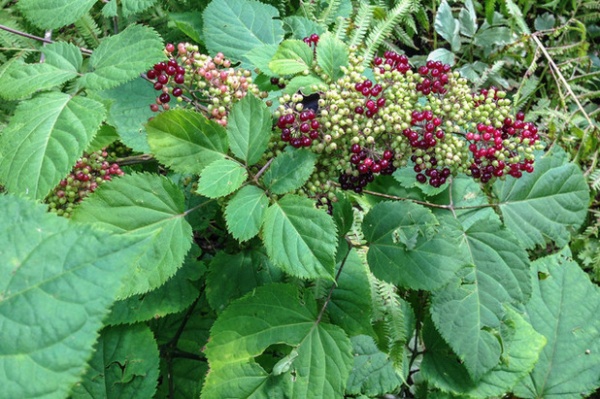
Botanical name: Aralia racemosa
Common name: American spikenard
Origin: Native from eastern to southwestern North America, from eastern South Dakota to Kansas, east to Maine in the north and Georgia in the south; in the Southwest it is native to New Mexico, Arizona, Utah and Colorado; in Canada it is native from Saskatchewan eastward to Quebec, Nova Scotia and Prince Edward Island
Where it will grow: Hardy to minus 40 degrees Fahrenheit, or minus 43 degrees Celsius (USDA zones 3a to 8a; find your zone)
Typical plant communities: Dry-medium to medium-moist woodland slopes and woodland edges
Soil requirement: Dry-medium to medium-moist, sandy-loam to clay-loam soil
Light requirement: Shade to partial sun
Mature size: 48 to 60 inches tall and 30 to 42 inches wide
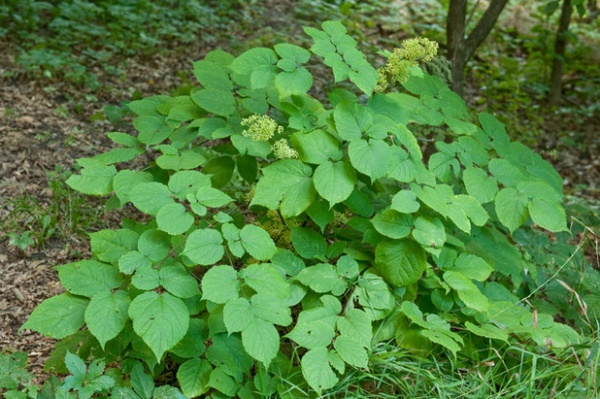
Benefits and tolerances: Tolerates shade and a wide range of soil conditions
Seasonal interest: Features large, compound leaves; large panicles bear many tiny creamy-white flowers that open in mid-July through August; robust size and bright red to maroon berries in fall
When to plant: Spring or fall. Potted plants and seeds are available from most native-plant nurseries in areas where it occurs.
Distinguishing traits. American spikenard is shrub-like in form and size, and makes a statement as a single specimen or combined with other shade-tolerant perennials. The fruit attracts many types of birds, which devour the ripening berries.
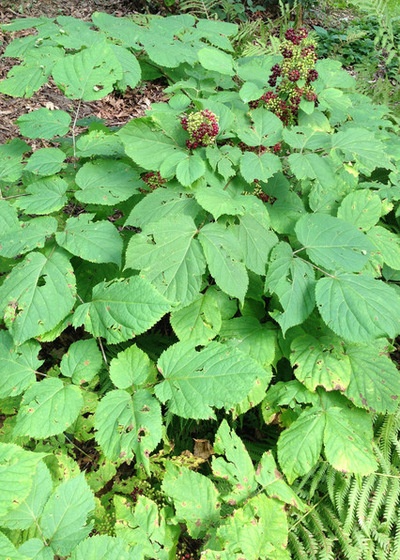
How to use it. Use this large native perennial in any shady site, including a formal shade garden, featured as a focal point along a woodland edge or naturalized in a deciduous woodland. Combine American spikenard with other shade-tolerant native perennials, including early meadow-rue (Thalictrum dioicum), large-leaved aster (Eurybia macrophylla) and sweet Joe Pye Weed (Eutrochium purpureum).
Planting notes. American spikenard is rhizomatous and will spread slowly in rich soil, forming clusters. It is a difficult plant to transplant, so site it appropriately and leave it in place.
The berries can be collected in September when ripe, and sown directly into the desired location in the fall. Collected seed can also be stored in a cool, dry location over the winter. Cold-stratify the seed in damp sand in the fridge for 60 days before sowing it in pots, or directly in the ground in the spring.
Be Your Own Wildflower Nursery
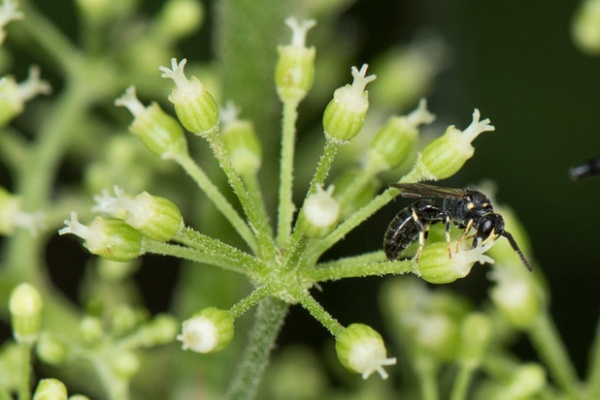
Pollinator notes. American spikenard flowers are small and inconspicuous, and are often overlooked by some large bees, such as bumblebees. Look closely for small bees, including yellow-faced bees (Hylaeus spp), shown, and small sweat bees (Lasioglossum spp).
The flowers attract a number of different solitary wasps, including potter, mason and grass-carrying wasps.
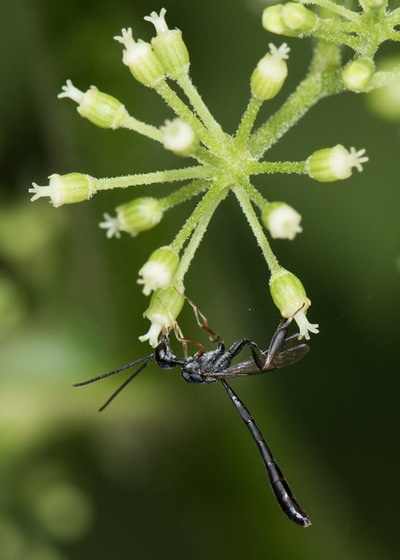
Shown: A gasteruption wasp
More
How to Design a Beautiful Shade Garden
Browse plants native to other regions of the U.S.












